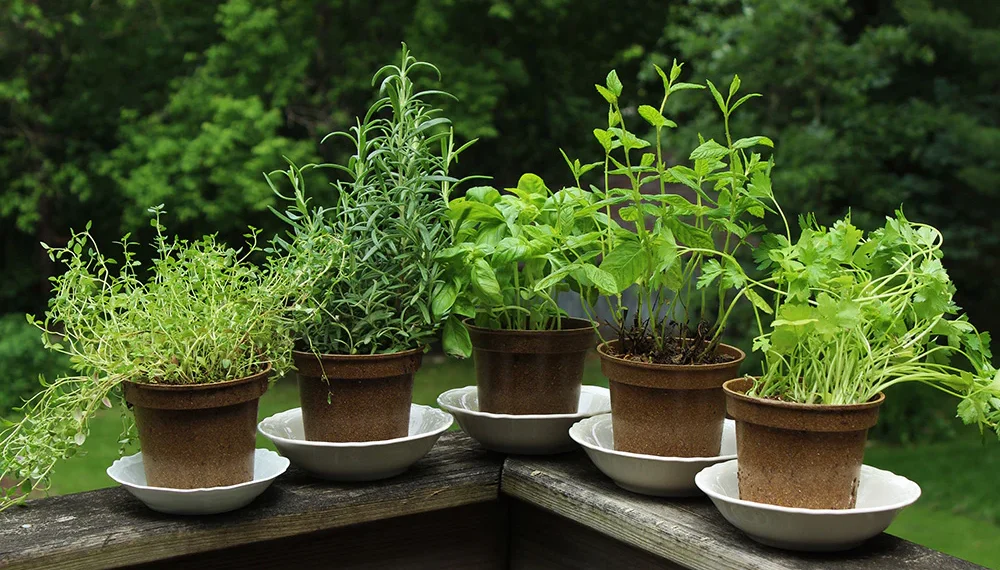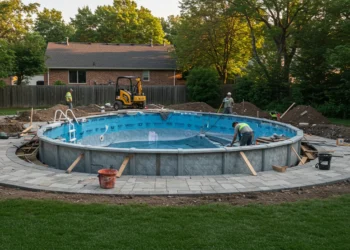Whether you stay in an apartment, a villa, a condo or a small house with no backyard, the dream of having a beautiful indoor or outdoor garden can be fulfilled. When planning for a garden, a few ideas pop in mind as to what will be the best thing to grow. It all depends on individual preferences, climate conditions and a few more factors. If you want to add merely aesthetics, planting flowers would be a good idea. However, if you have a dual motive of functionality and aesthetic, the idea of a herb garden is the best options.

There are many ways to build herb gardens for kitchen windowsill or a backyard. The freshness of homegrown herbs is unmatchable. The aroma adds amazing flavour and appearance to the dishes. Looking for a detailed idea to build your herb garden? You have landed on the right page because we have covered all the possible ideas for growing herbs. Here we go:
Read more: Garden Edging Ideas For Beginners
The Basics You Should Know Before Starting A Herb Garden.
One of the most crucial factors to consider before planting herbs is the positioning which decides the amount of sunlight plants receive. Some other factors are also vital, which are discussed below.
Location
The right location is a significant point to bear in mind before sowing. Decide the exact positioning, taking into account the type of soil, its quality and the area in which you plan to grow it ( a pot or a garden bed). Place the bigger plants at the back and the smaller plants towards the front.
Soil
Preparing soil for herbs garden is another important factor to consider. Most herbs grow well in well-drained soil because wet roots cause roots to rot. Healthy soil is a must to grow healthy herbs. Different soil needs different ways of treatment; clay soil needs compost to open up to allow water to run through it, whereas sandy soil requires compost to hold moisture.
Sunlight
The third vital requirement of herb garden plants is sunlight requirements. Most of the plants grow in full sunlight. Only a few don’t require much light. Plants such as rosemary and thyme need full-day sun, whereas for mint and parsley, less sunlight works. The flavour and fragrance of some plants get affected, and they become weak due to lack of sunlight.
Water
Regular watering is essential for plants, but knowing the amount and frequency of watering each herb requires is the main factor because over or under-watering may affect health.
Regular pruning
Regular harvesting and pruning will help plants grow in a healthy way. For some gardeners, it’s challenging to prune even the overgrown plants due to emotional connection. But you need to understand that they will not grow properly without pruning.
Choosing The Right Herbs For Your Garden
The purpose of starting herb garden differs from one individual to another. What is your aim? Are you growing herbs for food, medicinal purposes or as a hobby? No worries! Whatever reasoning you have, we will guide you through the process. Here are some types of herbs you can grow.
Culinary Herbs
These herbs are usually planted to make soups and other dishes tasty. Here are some of the culinary herbs:
- Jekkas thyme -It is a low-growing perennial tasty thyme that can be added to mushroom, chicken and vegetable dishes and even for salad dressing.

- Italian parsley – It is a flat leafy parsley growing annually, which can be used with other herbs in most dishes.
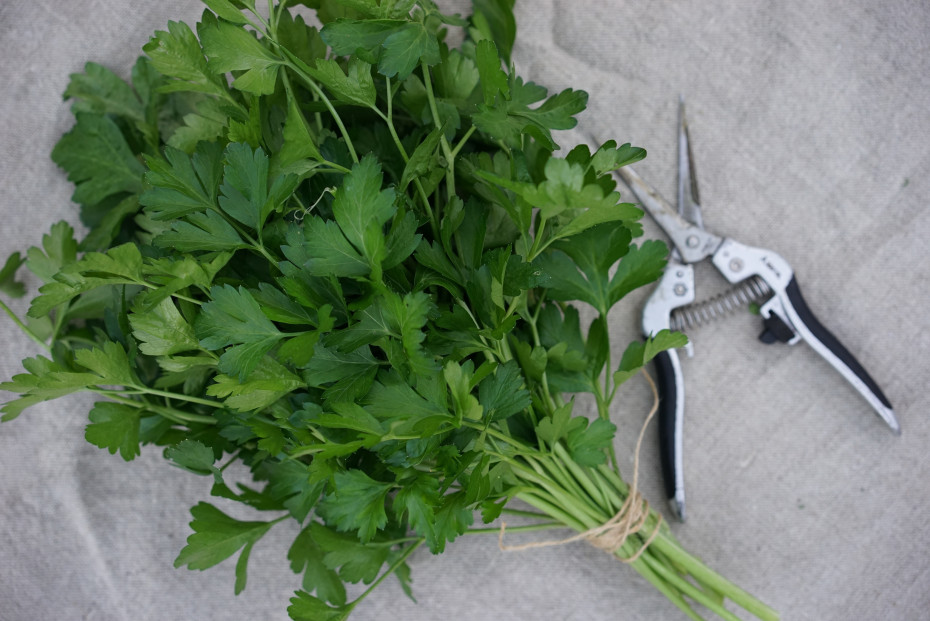
- Garlic chives – These are the delicious garlic-flavoured leaves used for garnishing dishes.

- Rosemary – It is a strong-flavoured woody herb that can add to the taste of roasted meat and vegetables.

- Greek basil – These are strong-flavoured perennial herbs to enhance the taste of pizza and pasta dishes or Asian stir-fries.

- Coriander(Perennial) – Compared to short-lived coriander, it is easy to grow. Leaves are added to dishes for a nice taste and fragrance. Even the whole plants can be grinded with garlic and chilli to make a tasty paste.

Read more: 25 Beautiful Australian Garden Trees Ideas To Add Charm
Medicinal Herbs
Herbs have been used since ancient times to cure various ailments. Fresh herbs from the herb garden are used to treat some diseases. A few of them are:
- Lemon balm – It helps in curing upset tummy. It tastes like tea.

- Comfrey – It provides relief from burns, bumps, bruises and breaks. Just compress it, and it works.

- Calendula – It is made from sunny flowers for soothing and healing to the skin.
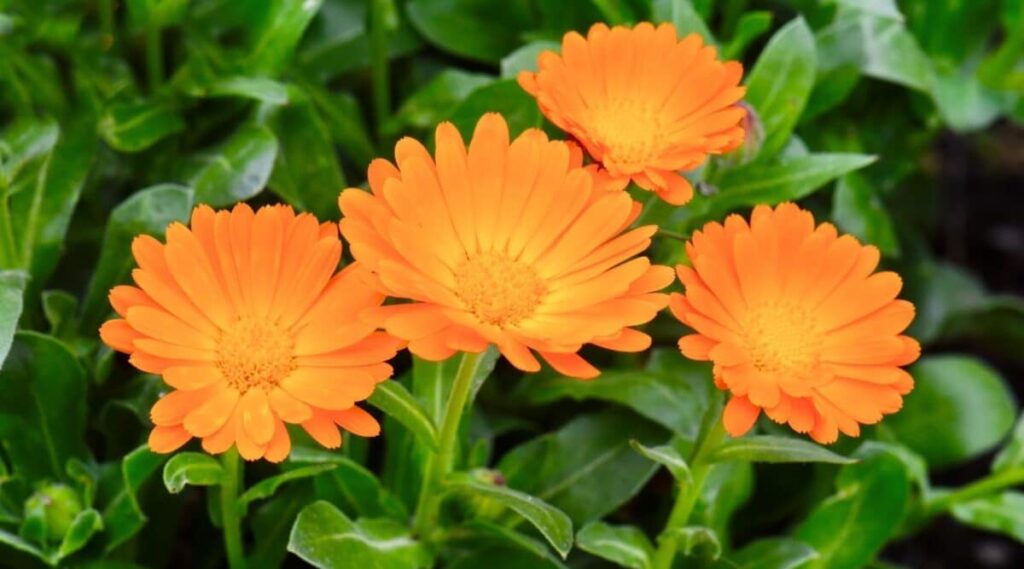
- Elder – It is also known as the mother of the herb garden used to relieve flu and cold.
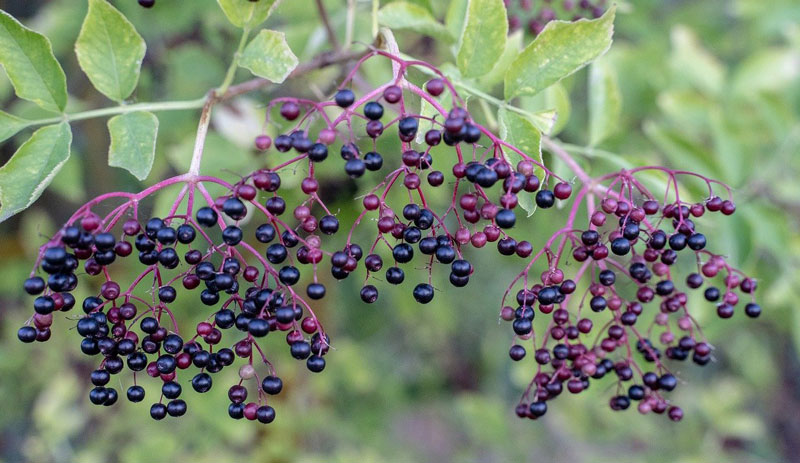
- Gotu kola – The best arthritis herb to relieve sore and painful joints.

- Echinacea – It’s a dark pink flower consumed with leaves and roots for a better immune system to fight against infections.
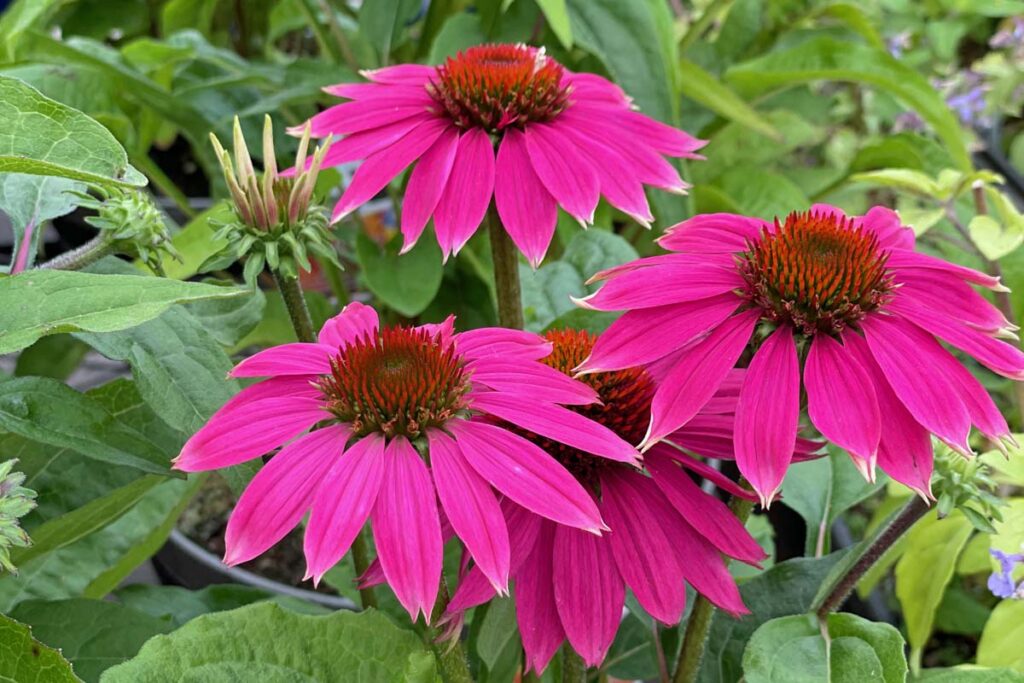
Cottage Herbs
These herbs grown in the cottage garden are used to grow flowers and edibles. Their fragrance, as well as flowers, are good. A few of these herbs are:
- Red yarrow – It has ferns and umbels of pink flowers.

- Clove pink – A beautiful perennial plant with grey leaves and pink flowers seen during summers.

- Salvias – Another perennial that offers a variety of colourful flowers.

- Catmint – A flowering perennial in a blue colour perfect to make an edge plant.

- Heliotrope cherry pie – A fragrant purple flower known as an old-fashioned flower with a long flowering season.

- Bronze fennel – It’s a ferny plant that looks amazing with cold or warm-coloured plants.
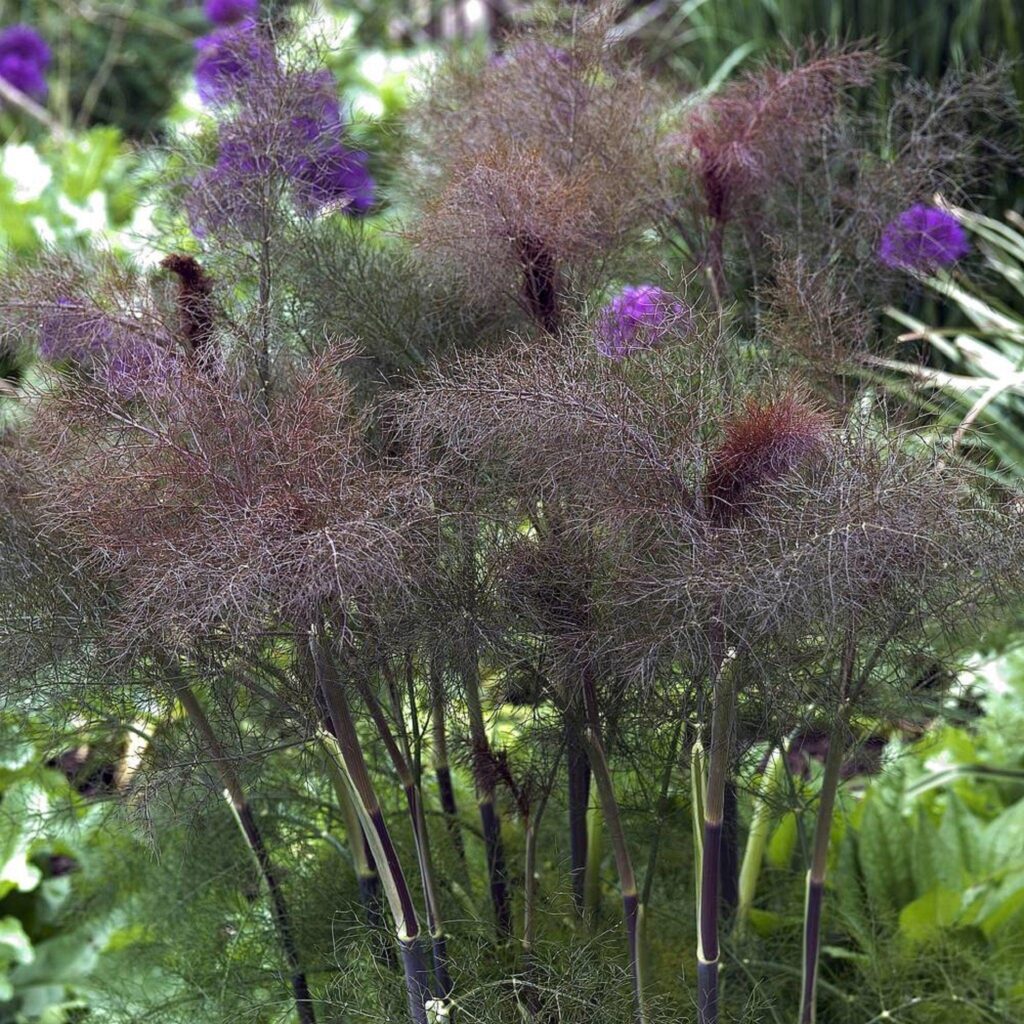
Aromatic Herbs
These herbs fill the herb garden with their aroma and colourful flowers, adding visual appeal to the garden. It serves both practical and decorative purposes. Some of them are:
- Lemon verbena – A shrub used as a fantastic tea is ideal for container growing. When touched, the leaves release a strong aroma, best suited for the pathway.
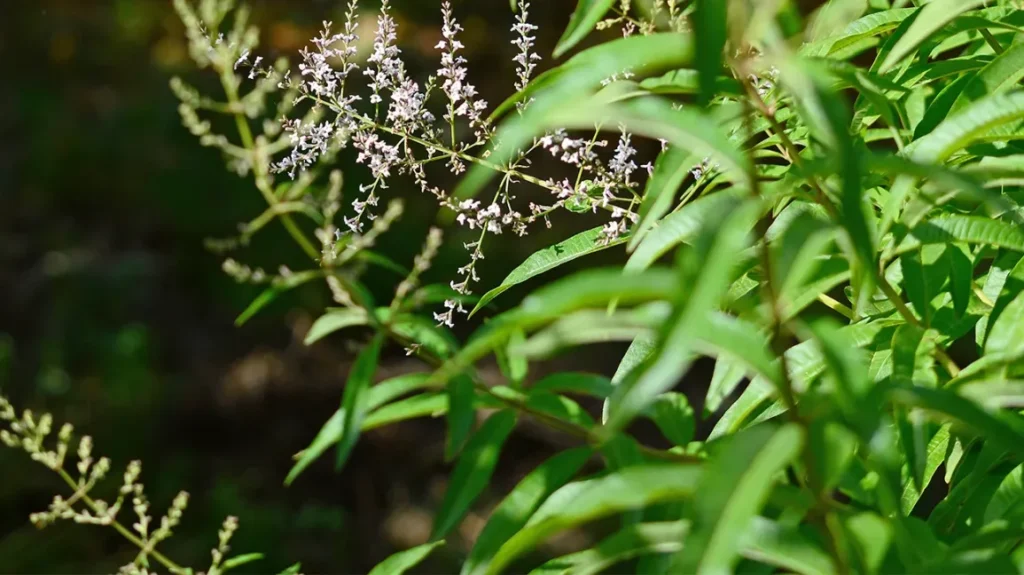
- Mint – A herb with a pungent smell in the leaves and stems is used as garnishing and can grow in sun or shade in moist soil.
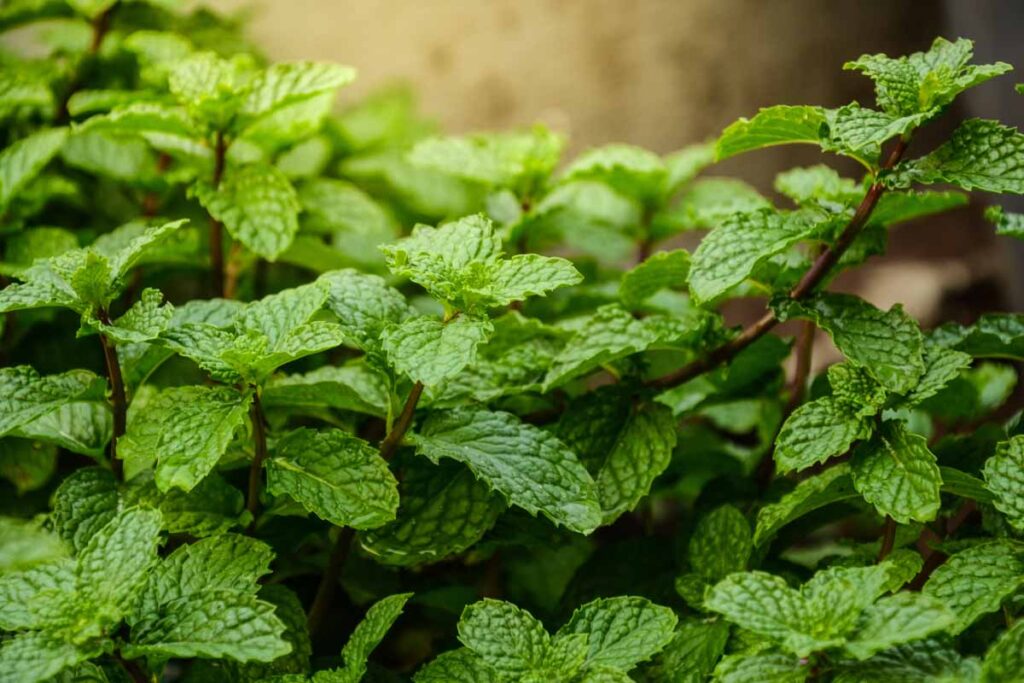
- Chamomile – It is a perfect choice for pavement cracks because of its low-growing spreading feature. The leaves release fragrance when rubbed. It is used in vegetable gardens to attract pollinators to boost harvest.

- Lavender – It is one of the most liked scented herbs for gardens and bees and butterflies.

- Fennel – It is a happy-go-lucky plant that self-seeds if planted at a happy place. It’s a short-lived scented herb.
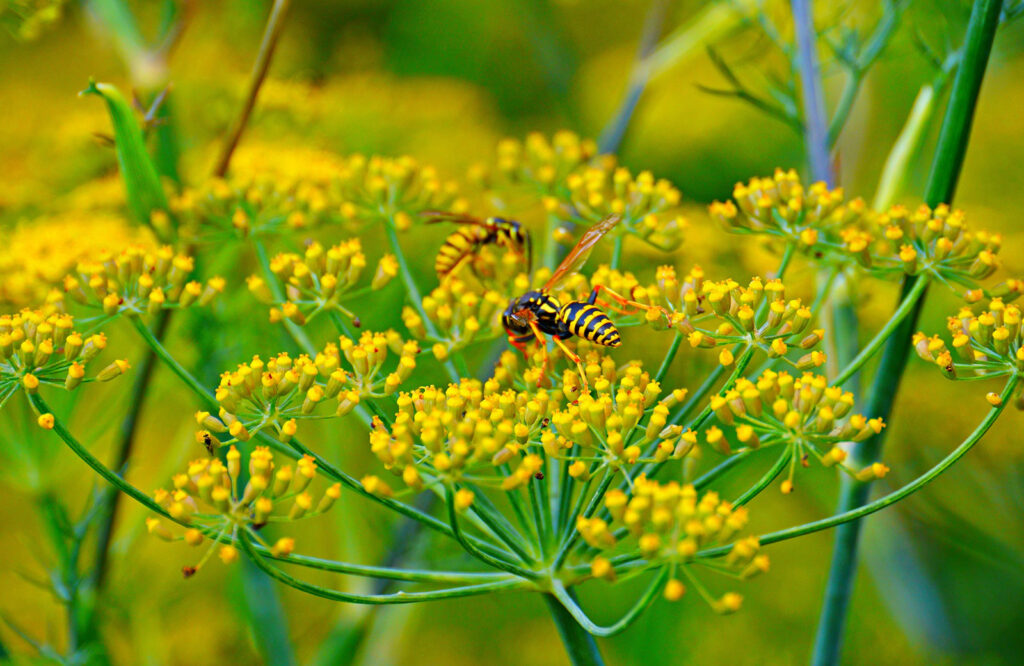
- Lemon balm – It is known for its fragrant leaves and beautiful white flowers. The leaves are added to tea, soups or lemonades for flavour.
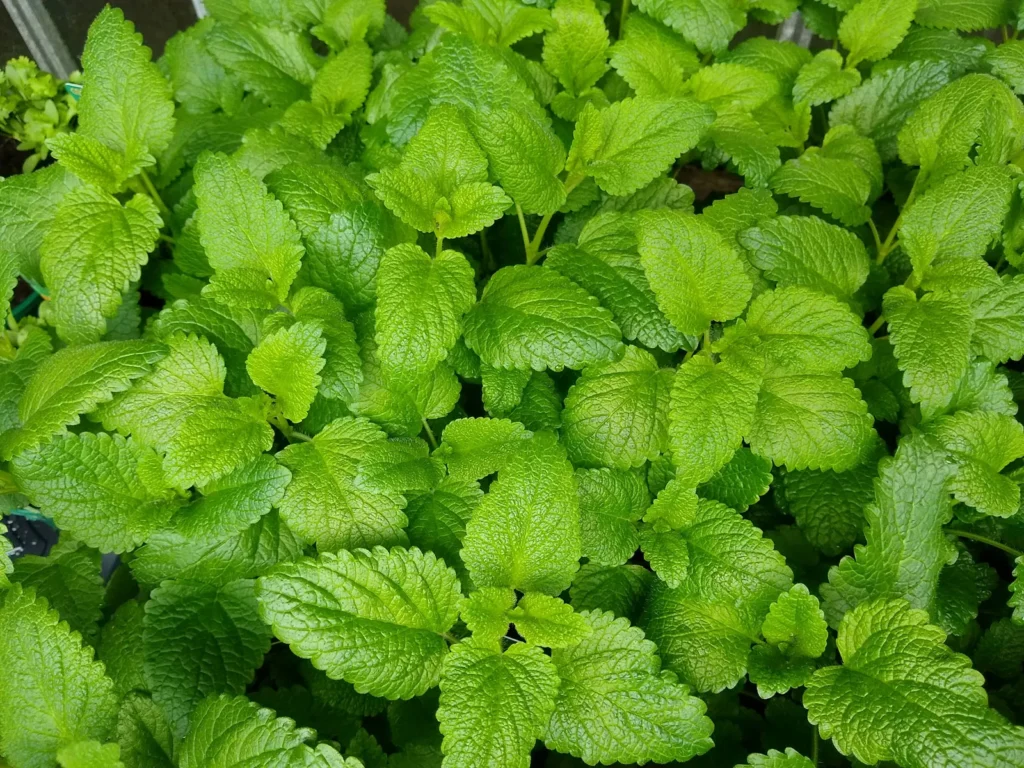
Ornamental herbs
Apart from medicinal, aromatic and culinary values, there are herbs grown merely for ornamental value. Some of them are:
- Silver thyme – An ideal herb with lavender blossom during summers to grow in cracks and crevices.
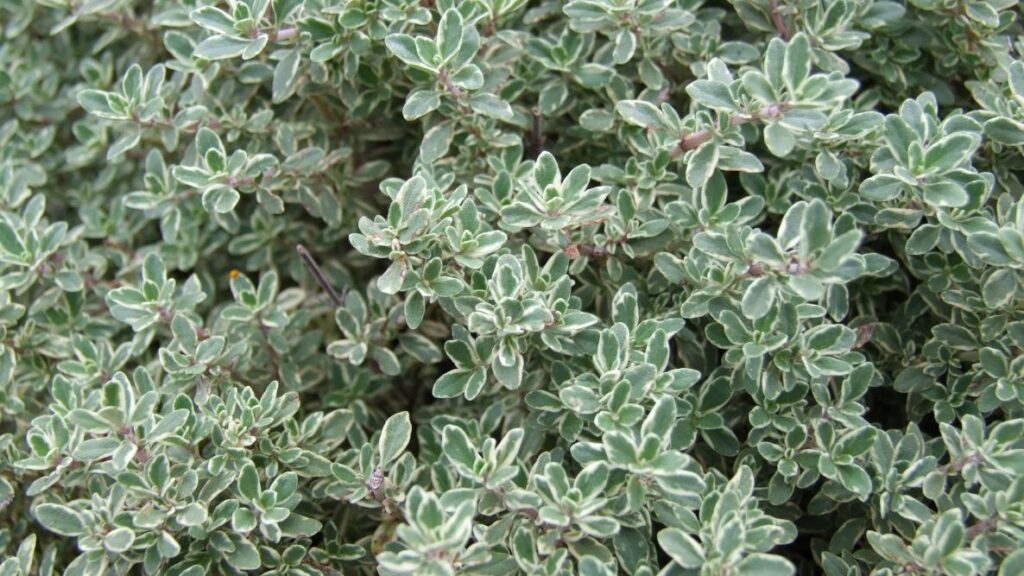
- Roman chamomile – It is usually sowed between paving stones to make the morning walk aromatic for a refreshing day ahead. White daisylike blooms are seen during the summers.

- Berggarten sage – A beautiful foliage herb used as a medicinal herb in the form of tea to treat lung and throat problems. It looks amazing with its dusty green leaves.

- Catmint – It’s a fantastic herb for the garden that attracts cats to relax in the centre of the plants. It has medicinal and culinary values, but the lavender flowers and grey-green leaves make it a perfect plant for the outskirts.
- Salem rosemary – It’s a hedging plant that provides protection from cold and is used in soups and stews for aroma and taste.
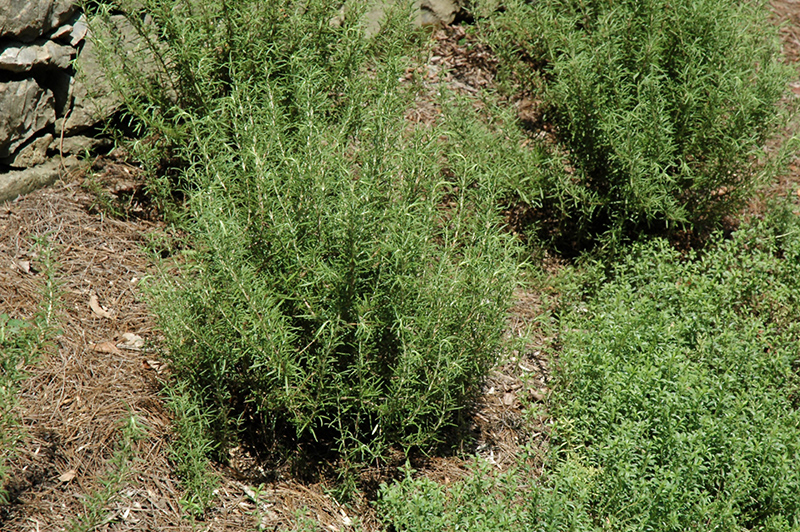
- Tutti frutti – Another beautiful herb to be grown along the border. With its raspberry red flower blooms, it looks stunning.
Time To Plan Your Herb Garden
By now, you must be aware of the basics of herb gardening and the types of herbs. Grow plants as per your choice and requirements. Some of the useful tips for proper planning for your garden are discussed below:
Garden Layout And Design

The layout and design depend on the size of your garden. The garden can be designed formally or outside the kitchen door for cooking. If you are an experienced gardener, a formal design with a balanced and non-identical bed is a good idea. Low-growing plants like thyme and rosemary are best suited if planning for knot design because fast-growing plants will dominate the garden.
Arranging Herbs By Growth Rate And Compatibility
Herbs with similar growth rates and features grow well together and increase the health of other plants. Selecting the types of companion herbs for the garden is essential for the overall well-being of all the plants.
Companion Planting

This is the process of growing plants together for the well-being of one another in a natural way. The symbiotic relationship between plants enhances the growth of all the plants in their vicinity. These plants need less fertilizers, so they work well in container-grown plants.
Herb Garden Tools And Equipment
- Dust mask
- Gloves
- Watering can to water the plants
- Gardening trowel
Process Of Preparing The Soil
Once the basic idea of growing herbs, location and which herb to grow is done, it’s time to prepare soil for herb for robust growth. Add plenty of compost if the soil is sandy or clay-heavy. Add some compost even to the healthy soil for better growth.
Steps For Planting Herbs From Seeds
- Pot preparation – Whether you are planting in a small garden or a backyard, pots are a must for some herbs.

- Group plants together – Pair the plants with similar growing conditions to ensure they help each other in better growth. The plants that grow in full sunlight should be sowed in the same pot, whereas others should be in different pots.

- Head to nursery – Once you list the herbs to grow, fetch the plants from a local nursery.
- Pot the plants – Once you have seedlings, sow them and add potting mix. Herbs can be grown as seeds or planted as plants.
Spacing For Herbs
The spacing depends on the type of herb, its growing pattern and the gardening method used. Some herbs like mint and oregano can dominate the space because they grow fast and spread too much. Here are the different spaces for herbs:
- Basil, chives, cilantro, parsley and thyme should be grown 6-12 inches apart
- Dill and oregano to grow at 12-18 inches apart
- Mint, rosemary and mint should be grown at 18-24 inches apart
Why Spacing Is Important
- For better air circulation around the plants.
- To ensure all the plants get enough nutrients for robust growth.
- To get enough light to all the plants because crowding may lead to shading.
- To avoid the spreading of diseases. If one plant from crowded sowing gets infected, it’ll spread to others.
Herb Garden Care
Planting the right seedling is essential, but caring is equally crucial because proper care is vital for the balanced and healthy growth of plants. Here are a few ways of herbs garden care:
Watering Frequency
Water is the most important for plants. In the first few weeks, many don’t realize how frequently herbs need it.
- Water the herbs planted in pots and garden beds daily for the first week because potted herbs dry out quickly.
- The frequency of watering in the following weeks depends on the positioning.
- Sticking your finger into the soil at least 5 cm is the best way to know if plants require water. If you feel dry, water the plants.
- Herbs in the ground need less water than the potted ones.
Mulching
- Mulching is essential to maintain the moisture and temperature of the soil.
- It’s a process to suppress weeds and give organic matter to the soil while enhancing the nutrient-holding capacity of the soil.
Fertilizing
Water, soil and sunlight are undoubtedly important, but fertilizer is another prime ingredient for healthy and happy herb growth. For best results, follow the steps below:
- Spread fertilizer around the base and not to the stem
- To protect herbs from extreme weather conditions, use seaweed products like seasol.
Harvesting Tips
By now, you know the process of planting, watering, mulching and fertilization. Now, it’s time to learn about harvesting because pruning and picking herbs helps produce bushy plants.
- Cut the herbs like rosemary, basil and mint back to above a leaf node for the plant to come out again.
- Pick rocket and parsley from the base of the plant
- Always leave some leaves on plants for future growth.
Common Herb Garden Problems And solutions
There are specific problems with herb gardens that need attention, or all the hard work on growing the garden will be in vain.
- Bolting – Choose a variety of herbs not prone to bolting, such as chives and cilantro, and plant them at the right time.
- Pests – The best way to deal with pests is to introduce natural predators such as ladybugs and lacewings.
- Leaves turning yellow – The main reason for leaves turning yellow is overwatering, underwatering or nutrient deficiency. Water the plants in a balanced way and use a balanced fertilizer.
- Fungal disease – Fungal disease may be because of improper spacing, wrong watering or fungicides. To control all these and ensure proper space between the plants, adequate watering techniques and natural remedies to control fungus are followed.
- Nutrition deficiency – Use compost or manure, bonemeal or wood ash to ensure sufficient plant nutrition.
- Excess heat or sunburn – During hot days, keep them in the shade under a tall tree, keep the soil cool and moist by watering it deeply,
- Overwatering – Water the outdoor herb garden plants once or twice a week during hot weather and water indoor plants only when the top soil is dry.
- Animals eating the plants – Plant marigolds near the edge to protect them from rabbits and other animals. Planting rosemary can also help because a strong smell prevents herb-loving animals from entering the garden.
Creative Herb Garden Ideas
We have shortlisted a few ideas for the herb garden.
- Raised herb garden – The best way to keep herbs out of animal reach and add aesthetics in the outdoor area.

- Mobile garden – This idea will help you take the plant indoors during extreme winters.

- Herbs over the dining table – It’s an amazing visual treat to see herb pots hanging above the dining table. Grow herbs you use in the kitchen for easy reach.

- Give more space to herb plants – Though crowded plants look beautiful, spread out the plants to allow air circulation and protection from pests.
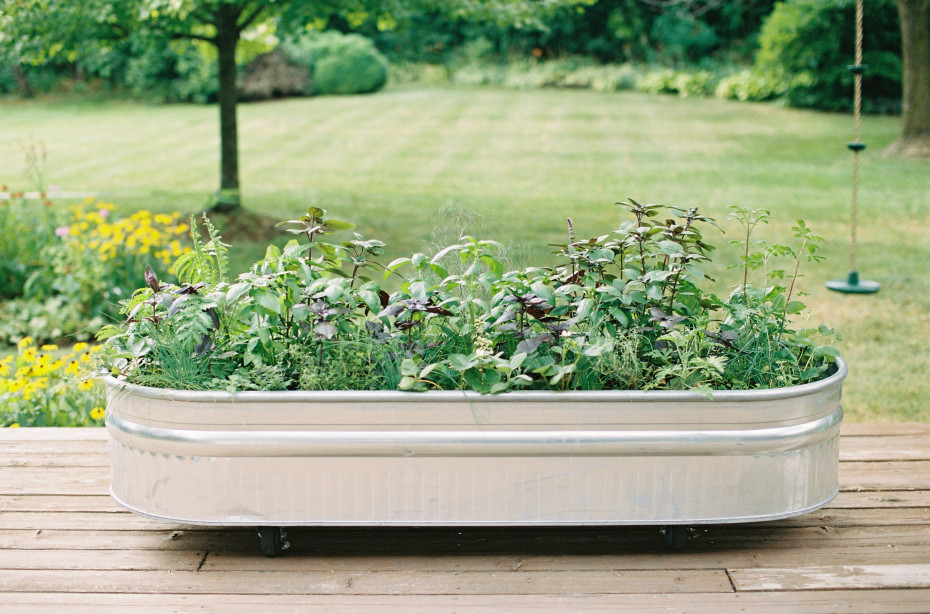
- Herbs in the bathroom – If living in a small apartment, place moisture-loving herbs in the bathroom and let them enjoy the humidity.

- Herbs near the bar – Isn’t it a fantastic idea to have herbs like mint around the bar for quick plucking to make a cocktail or mocktail? Go for it without a second thought.

- Herbs in the rock garden – A better way to elevate the look of the rock garden is with beautiful flowers and herbs such as rosemary and thyme.

- Herbs to repel mosquitoes – What an idea! Grow herbs like lavender and lemongrass to keep away mosquitoes.
- Concrete pavers – Create a patio with these pavers and restrain the spread of herbs like mint along the grid.
- Kitchen herb garden in small pots – Have a small kitchen garden near the sunny window to grow thyme and basil for kitchen use and for a natural look.
- Multi-tiered wood pallet garden – It’s an exciting way to grow and label herbs because it has plenty of flat surfaces.
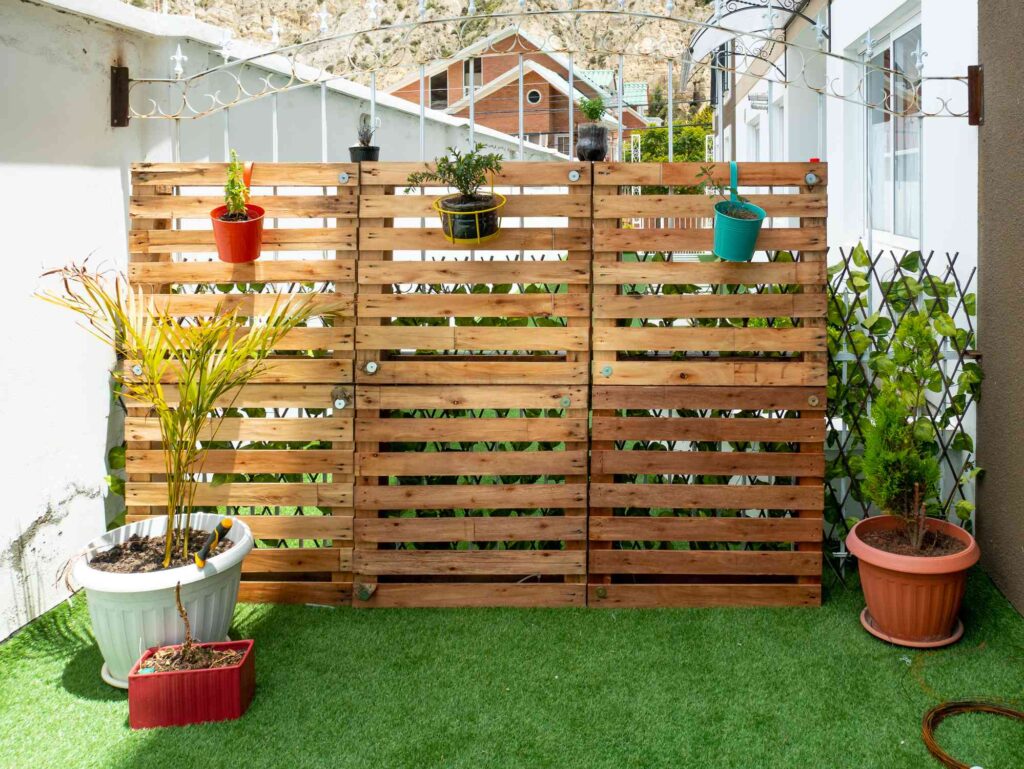 Trellis garden in a balcony – If your balcony is small and there’s no space in the room for pots, simply hang the pots on the trellis garden
Trellis garden in a balcony – If your balcony is small and there’s no space in the room for pots, simply hang the pots on the trellis garden
Read more: The Best 19 Raised Garden Bed Ideas For Your Beautiful Garden!
Conclusion
The dream of having the best herb garden is easy to achieve considering all the vital factors from which herbs to grow, where to position, how to grow and maintain them, to fertilizing and harvesting. There are a variety of options to suit your requirements.
FAQs
Do Herbs Do Well In Raised Beds?
Yes, herbs do well in raised garden beds. It also protects herb plants from animals. It helps you make the most of the limited space available.
What Is The Best Layout For An Herb Garden?
The best layout for a herb garden is an enhanced container in the centre of the garden. It will ensure that fast-growing herbs like mint do not dominate the space and leave space on the ground for other plants to grow.
